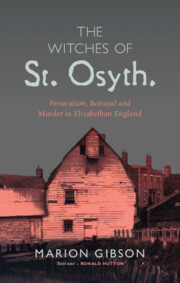Refine search
Actions for selected content:
57 results
8 - Caporetto According to Cadorna: A Moral Autobiography of the Italians
- from Part III - The Downfall
-
- Book:
- The Generalissimo
- Published online:
- 31 July 2025
- Print publication:
- 14 August 2025, pp 205-228
-
- Chapter
- Export citation
Effectiveness of a communal, multilevel, interdisciplinary suicide prevention program
-
- Journal:
- European Psychiatry / Volume 68 / Issue 1 / 2025
- Published online by Cambridge University Press:
- 16 July 2025, e119
-
- Article
-
- You have access
- Open access
- HTML
- Export citation
5 - Dull Instead of Light
-
- Book:
- Selling Sexual Knowledge
- Published online:
- 24 June 2025
- Print publication:
- 10 July 2025, pp 152-180
-
- Chapter
-
- You have access
- Open access
- HTML
- Export citation
Nutritional interventions in patients with burn injury: an umbrella review of systematic reviews and meta-analyses of randomised clinical trials
-
- Journal:
- British Journal of Nutrition / Volume 132 / Issue 10 / 28 November 2024
- Published online by Cambridge University Press:
- 06 November 2024, pp. 1317-1324
- Print publication:
- 28 November 2024
-
- Article
- Export citation
17 - International Criminal Procedure
- from Part V - International Criminal Procedure and Sentencing
-
- Book:
- An Introduction to International Criminal Law and Procedure
- Published online:
- 07 November 2024
- Print publication:
- 18 July 2024, pp 387-425
-
- Chapter
- Export citation
21 - Beliefs About Juror Decision-Making and the Jury Process
- from Part III - Trial Phase Decision-Making
-
-
- Book:
- The Cambridge Handbook of Psychology and Legal Decision-Making
- Published online:
- 22 February 2024
- Print publication:
- 29 February 2024, pp 324-338
-
- Chapter
- Export citation
Conclusion
-
- Book:
- Realist Trials and Systematic Reviews
- Published online:
- 08 February 2024
- Print publication:
- 15 February 2024, pp 99-101
-
- Chapter
- Export citation
II.32 - The Trial of Alice Kyteler on a Charge of Witchcraft
- from Fourteenth Century
-
- Book:
- The Cambridge Anthology of British Medieval Latin
- Published online:
- 11 January 2024
- Print publication:
- 01 February 2024, pp 299-303
-
- Chapter
- Export citation
II.40 - A Woman Is Tried for Heresy at Norwich: a Court Record
- from Fifteenth Century
-
- Book:
- The Cambridge Anthology of British Medieval Latin
- Published online:
- 11 January 2024
- Print publication:
- 01 February 2024, pp 352-356
-
- Chapter
- Export citation
Asian Courts in Times of COVID: Virtualization and the New Normal
-
- Journal:
- Asian Journal of Law and Society / Volume 10 / Issue 2 / June 2023
- Published online by Cambridge University Press:
- 11 October 2023, pp. 183-203
-
- Article
- Export citation
Treating negative symptoms of schizophrenia: current approaches and future perspectives
-
- Journal:
- The British Journal of Psychiatry / Volume 223 / Issue 1 / July 2023
- Published online by Cambridge University Press:
- 05 June 2023, pp. 332-335
- Print publication:
- July 2023
-
- Article
-
- You have access
- HTML
- Export citation
4 - The Truth Factory
- from Part II - The Truth Factory
-
- Book:
- The Making Sense of Politics, Media, and Law
- Published online:
- 06 April 2023
- Print publication:
- 13 April 2023, pp 63-91
-
- Chapter
-
- You have access
- Open access
- HTML
- Export citation
How do defendants choose their trial court? Evidence for a heuristic processing account
-
- Journal:
- Judgment and Decision Making / Volume 8 / Issue 5 / September 2013
- Published online by Cambridge University Press:
- 01 January 2023, pp. 552-560
-
- Article
-
- You have access
- Open access
- HTML
- Export citation
Conclusion
-
- Book:
- The Witches of St Osyth
- Published online:
- 02 December 2022
- Print publication:
- 22 December 2022, pp 266-296
-
- Chapter
- Export citation
6 - An Untrue and Unjust Record
-
- Book:
- The Witches of St Osyth
- Published online:
- 02 December 2022
- Print publication:
- 22 December 2022, pp 216-265
-
- Chapter
- Export citation

The Witches of St Osyth
-
- Published online:
- 02 December 2022
- Print publication:
- 22 December 2022
10 - Silence as Evidence
- from Part III - On Evidential Inferences
-
-
- Book:
- Evidential Legal Reasoning
- Published online:
- 05 May 2022
- Print publication:
- 19 May 2022, pp 171-197
-
- Chapter
- Export citation
Chapter 9 - The Spa Fields Insurrection: 1816–17
- from Part Three - Thistlewood: His Story
-
- Book:
- Conspiracy on Cato Street
- Published online:
- 06 April 2022
- Print publication:
- 12 May 2022, pp 186-216
-
- Chapter
- Export citation
Chapter 2 - Outlaws from Birth
- from Part I - A Cultural Prehistory of Intersex from the Archives
-
- Book:
- Unmaking Sex
- Published online:
- 03 March 2022
- Print publication:
- 24 March 2022, pp 55-88
-
- Chapter
- Export citation
1 - Introduction
-
- Book:
- The Dreadful Word
- Published online:
- 03 March 2022
- Print publication:
- 10 March 2022, pp 1-34
-
- Chapter
- Export citation
